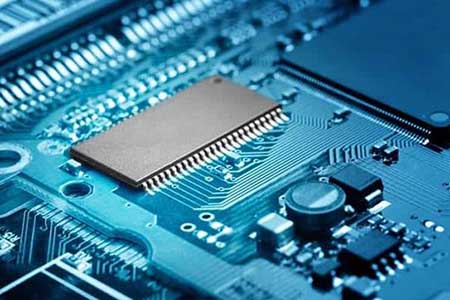With an estimated CAGR of 3% during the projected period, the integrated passive devices market share is expected to reach US$ 3 billion by 2032, finds a recent report published by Fact.MR. The study finds that the rising demand, particularly in the telecom industry, reflects the adoption of integrated passive devices.
Integrated passive devices would aid in the reduction of the size and power consumption of telecom infrastructure items, boosting the integrated passive devices market in the next years, particularly in the telecom industry.
By 2022, the 5G industry is estimated to have 89 million subscribers, giving the integrated passive devices market room to expand. High-efficiency 5G integrated passive devices RF filters were created by 3D Glass Solutions.
Furthermore, 5G technology is scheduled to be deployed in the United States, Japan, South Korea, the United Kingdom, Germany, and China by 2021, which is likely to contribute to the growth of the integrated passive devices market in the following years.
Manufacturers in the integrated passive devices market get a big platform from which to serve the whole demand for integrated passive devices. The worldwide sales of integrated passive devices are seeing increased competition. With growing competition, new competitors are offering a variety of options at reasonable pricing, fulfilling the demand for integrated passive devices more accessible to customers.
In the year 2020, the Asia Pacific region had the biggest market share of 25.16%. Because of increased disposable incomes and improved living circumstances in countries like India, Asia-Pacific dominates the integrated passive device market. Because of government steps to promote semiconductor production in the area, the Asia Pacific integrated passive devices market will develop from 2021 to 2028.
Key Takeaways:
● The Consumer Electronics segment dominated the market and held the largest market share of 21.7% in the year 2020On the basis of industry verticals, the global integrated passive devices market is segmented into consumer electronics, automotive, aerospace & defense, telecommunication, medical & healthcare, and others.
● Increased usage of these components in different consumer electronics products such as laptops, smartphones, wearables, and tablets, among others, is credited with the increase.
● The integrated passive devices have a number of high-end qualities, including low power consumption, high chip connection, and a tiny footprint, which has fuelled their acceptance in miniaturized hand-held electronics.
● The Asia Pacific integrated passive devices market will grow from 2021 to 2028 due to government measures to expand semiconductor production in the region.
● Gestamp, a Spanish multinational company specializing in developing and manufacturing metal components for automobiles, will receive a EUR200 million loan from the European Investment Bank (EIB) to upgrade its research capabilities to produce lighter, safer, and environmentally friendly cars according to the European Commission.
What is the Factors Limiting the Growth of the Integrated Passive Devices Market?
The high cost of integrated passive devices in comparison to discrete components limits the growth of the integrated passive device market as well as sales of integrated passive devices and demand for integrated passive devices.
The long-term impact is projected to be minimal because leading companies in this sector are working hard to minimise the cost of integrated passive devices.
Low-cost production is critical for profit maximisation. Traditional printed circuit boards, on the other hand, are standardised for individual discrete components but not for integrated passive devices. When traditional PCBs are combined with integrated passive devices, they suffer additional costs. The cost ratio of a single discrete component to integrated passive devices (1.5 X 1.5) is one and one-third. This is mostly due to the commoditization and widespread use of discrete components.
Competitive Landscape
Johanson Technology, Inc. (Johanson) (United States), OnChip Devices, Inc. (OnChip Devices) (United States), Global Communication Semiconductors, LLC (GCS) (United States), 3DiS Technologies (3Dis) (France), and Advanced Furnace Systems Corp. (AFSC) (United States) (Taiwan) are some of the leading participants in the integrated passive devices market.
● Murata introduced the NFZ03SG SN family of audio line noise filters for smartphones in February 2018 to effectively remove noise while keeping good sound quality.
● STMicroelectronics introduced the STM32F722 Nucleo board and STM32F723 Discovery Kit in February 2017, extending the versatility of the STM32 Ecosystem. These kits can assist creative presentations by including onboard capabilities, MEMS microphones and sensors, an audio codec, and a display for user-interface development.
● STMicroelectronics teamed up with Mobile-Payment Partners such as Giesecke & Devrient (Germany) and FitPay (US) in January 2017 to provide turnkey, certification-ready wearable device solutions.
● On-chip Devices increased its service offerings in August 2016 with the addition of Semiconductor Wafer Fabrication Services, a new fabrication facility.
These insights are based on a report on Integrated Passive Devices Market by Fact.MR.












